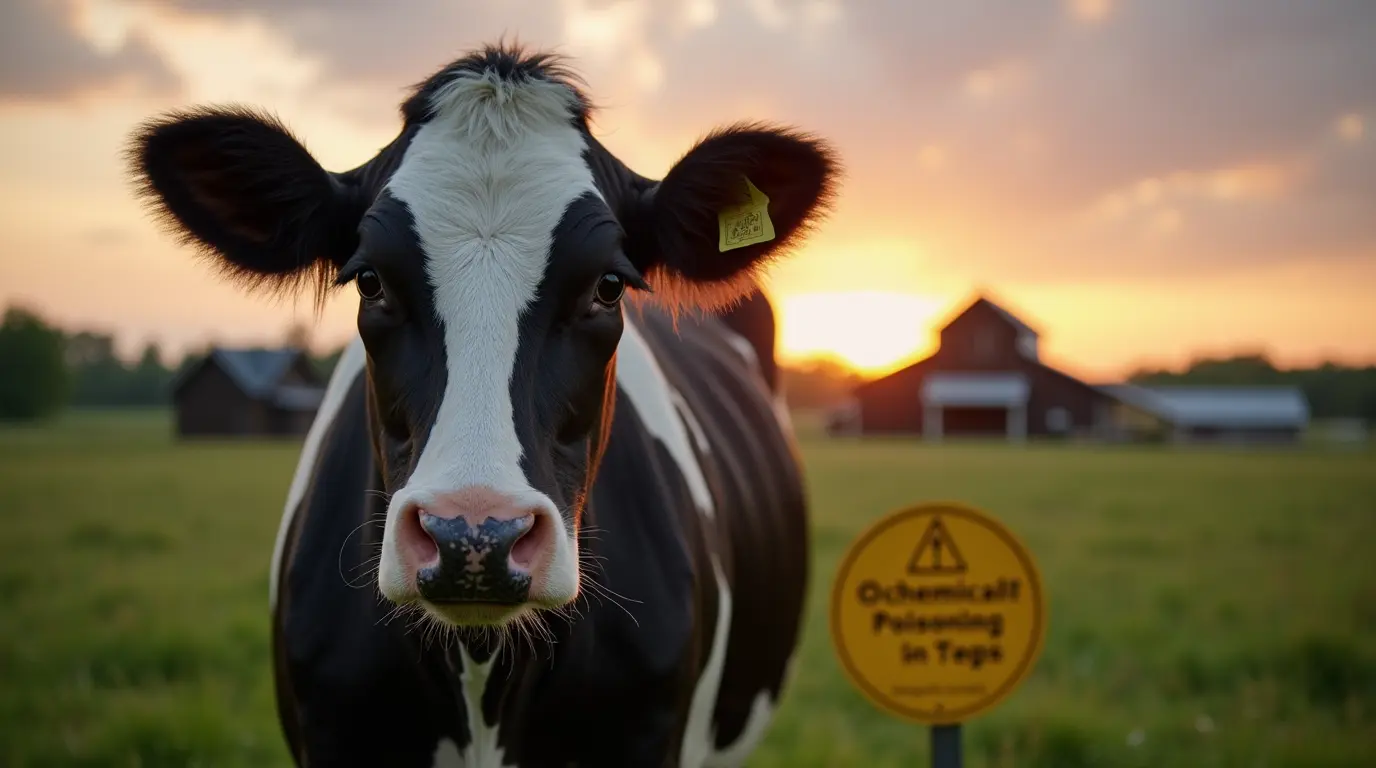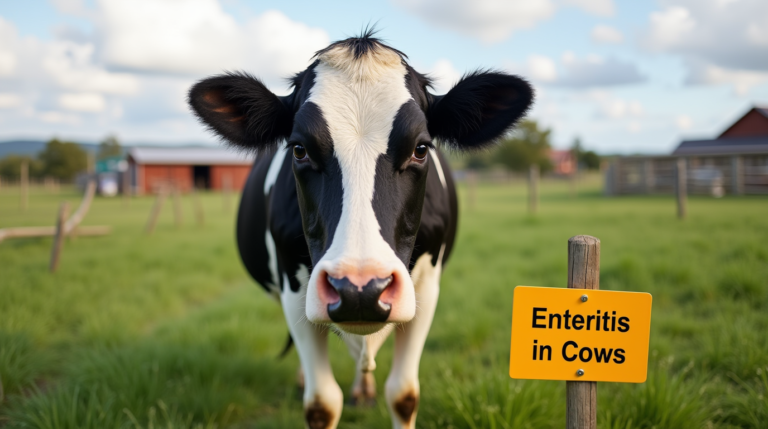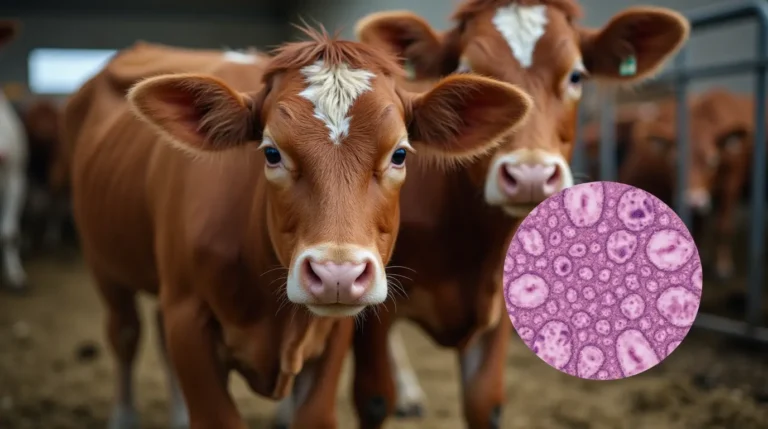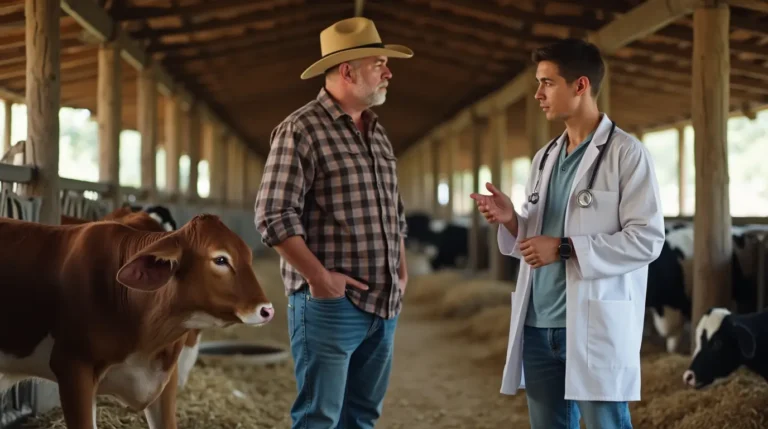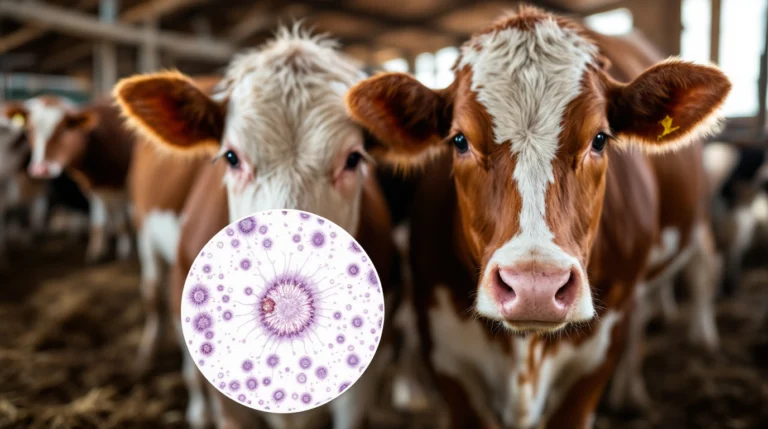Protect your cattle from deadly chemical poisoning in cows : Learn about 6 critical toxins, prevention strategies, and expert tips to safeguard your herd’s health and productivity.
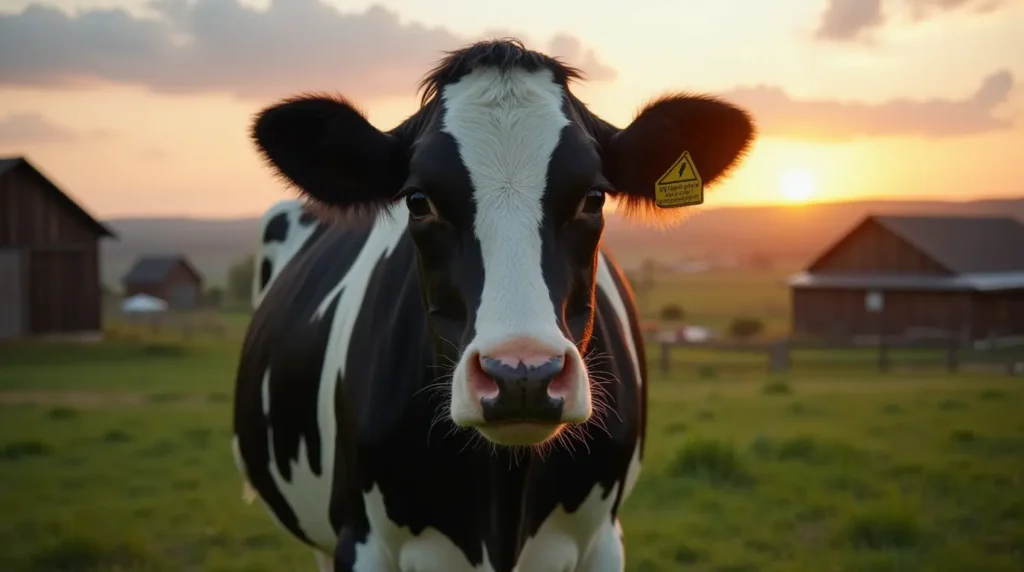
Table of Contents
Chemical poisoning represents one of the most significant yet often overlooked threats to cattle health and agricultural productivity. Every year, hundreds of farmers face devastating losses due to accidental toxin exposure, resulting in substantial economic and emotional strain. Understanding the nuanced landscape of chemical poisoning in cows is not just a matter of veterinary expertise—it’s a critical component of responsible farm management and animal welfare.
This comprehensive guide will dive deep into the world of chemical toxins, exploring six of the most common threats to your herd, their potential sources, symptoms, and—most importantly—proven prevention strategies that can mean the difference between a thriving livestock operation and a potential disaster.
Understanding Chemical Poisoning in Cows: An Overview
Chemical poisoning occurs when cattle are exposed to toxic substances that can cause severe health complications or even fatal outcomes. These toxins can originate from multiple sources, including:
- Agricultural chemicals
- Industrial pollutants
- Natural environmental hazards
- Contaminated feed or water sources
- Inadvertent exposure during farming operations
The Economic and Health Impact
The consequences of chemical poisoning extend far beyond immediate animal health:
| Impact Area | Potential Consequences |
| Livestock Mortality | Direct financial losses |
| Reduced Productivity | Decreased milk/meat production |
| Veterinary Expenses | High treatment and diagnostic costs |
| Breeding Complications | Potential long-term reproductive issues |
6 Common Chemical Toxins Threatening Cattle Herds
1. Pesticide Poisoning
Sources
- Crop protection chemicals
- Insecticides
- Agricultural spray drift
Symptoms
- Excessive salivation
- Muscle tremors
- Respiratory distress
- Neurological complications
2. Heavy Metal Contamination
Primary Sources
- Industrial waste
- Contaminated groundwater
- Mining region runoff
- Improper waste disposal
Potential Toxins
- Lead
- Mercury
- Cadmium
- Arsenic
3. Nitrate and Nitrite Poisoning
Common Origins
- Excessive fertilizer application
- Contaminated water sources
- Certain plant species during stress conditions
Physiological Impact
- Reduced oxygen-carrying capacity of blood
- Potential methemoglobinemia
- Acute respiratory complications
4. Mycotoxin Exposure
Breeding Grounds
- Improperly stored feed
- Moldy hay or grain
- Humid storage conditions
Health Risks
- Immune system suppression
- Reproductive disorders
- Potential liver damage
5. Pharmaceutical Chemical Interactions
Potential Causes
- Incorrect medication dosages
- Incompatible drug combinations
- Residual veterinary chemical traces
Monitoring Strategies
- Precise record-keeping
- Regular veterinary consultations
- Comprehensive medication audits
6. Industrial Chemical Exposure
Risk Zones
- Proximity to industrial facilities
- Agricultural regions near manufacturing plants
- Areas with historical industrial activity
Preventive Measures
- Regular environmental testing
- Creating buffer zones
- Implementing comprehensive water filtration systems
Prevention and Protection Strategies
Comprehensive Risk Assessment Checklist
- Conduct regular environmental surveys
- Test water and feed sources quarterly
- Maintain detailed exposure records
- Train farm staff on chemical hazard identification
- Develop rapid response protocols
Recommended Protective Equipment
- Chemical-resistant gloves
- Protective eyewear
- Specialized respiratory masks
- Contamination management kits
Recommended Products for Protecting Cattle
1. ChemGuard Cattle Protection Kit
- Comprehensive chemical exposure testing kit
- Includes water and feed analysis tools
- Professional-grade diagnostic equipment
2. SafeGraze Pasture Protection Spray
- Eco-friendly chemical neutralization solution
- Helps mitigate environmental toxin risks
- Safe for immediate pasture reuse
3. VetAlert Chemical Exposure Monitor
- Real-time toxin detection device
- Bluetooth-enabled reporting
- Integrated livestock health tracking
4. EmergencyCare Cattle First Response Kit
- Specialized treatment for chemical exposure
- Includes neutralizing agents
- Veterinarian-recommended protocols
Chemical Poisoning in Cows (FAQ)
Q1: How quickly can chemical poisoning affect my herd?
Chemical poisoning can occur within minutes to hours, depending on the toxin and exposure level.
Q2: Are certain cattle breeds more susceptible?
While susceptibility varies, younger and older animals typically have higher vulnerability.
Q3: How often should I test for chemical contamination?
Experts recommend quarterly testing, with additional checks after significant environmental changes.
Q4: What immediate steps should I take if I suspect poisoning?
- Isolate affected animals
- Contact a veterinarian immediately
- Preserve potential evidence of exposure
- Prevent further contact with the suspected toxin
Conclusion
Protecting your cattle from chemical poisoning in cows ,requires vigilance, knowledge, and proactive management. By understanding potential risks, implementing comprehensive prevention strategies, and staying informed, farmers can significantly reduce the likelihood of devastating chemical exposure incidents.
We want to hear from you! Share your experiences, prevention strategies, or questions in the comments below. Together, we can create safer environments for our livestock.
Explore more expert livestock care guides at BlithePet .

